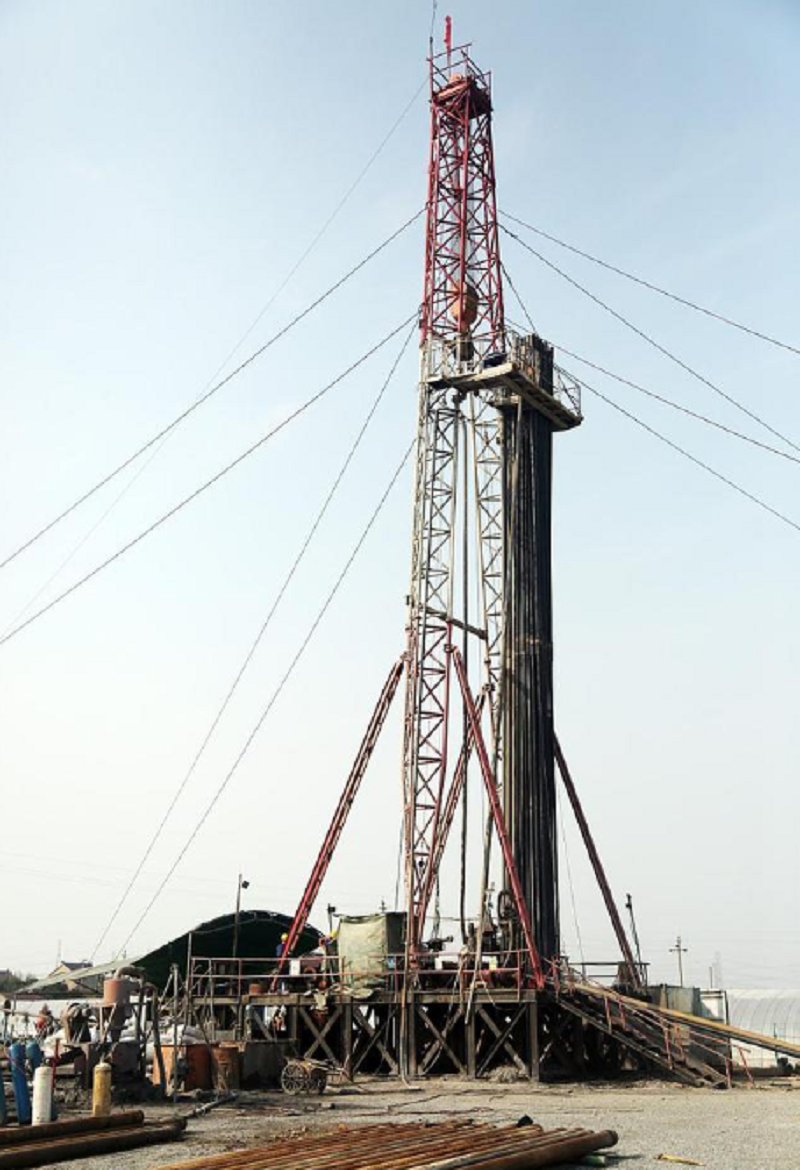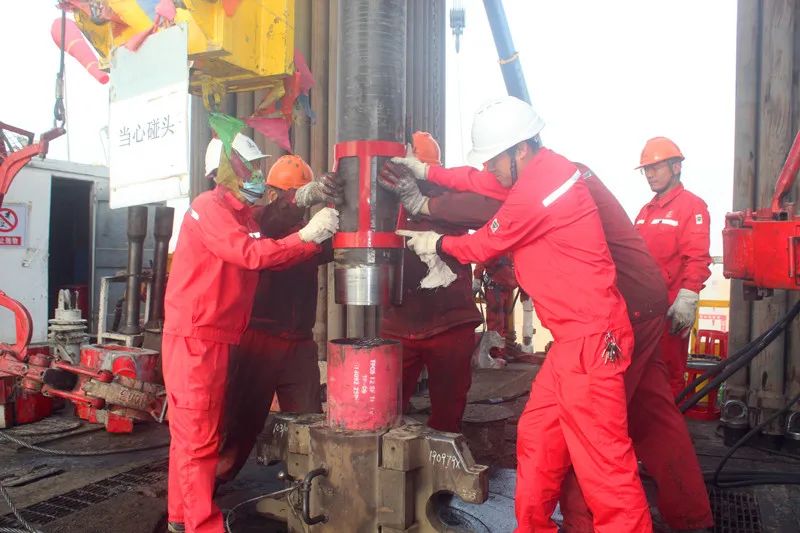
Brief introduction of casing drilling
General Introduction
Casing drilling refers to using casing instead of drill pipe to apply torque and drilling pressure to the drill bit, achieving rotation and drilling of the drill bit. The entire drilling process no longer uses drill rods, drill collars, etc. The drill bit is thrown and salvaged using steel wire ropes, achieving the lifting and lowering of the drill bit inside the casing, and the drill bit and drilling tools can be replaced without the need to lift the drill bit. This effectively reduces accidents such as tripping, blowout, and sticking, improves drilling safety, and reduces drilling costs.
As early as the 1950s, some people had envisioned using casing instead of drill pipe to complete drilling operations, but due to the limitations of technology and equipment at that time, it was difficult to achieve this idea. In the 1990s, due to the significant development of new technologies, materials, and electronic technologies, oil extraction technology continued to develop. A large number of new drilling techniques, tools, and equipment emerged, and casing drilling technology was once again proposed. Texco Corporation of Canada drilled the first test well for casing drilling in 1996, which was a test site well and drilled 150 meters with 95/8 “casing. By the end of 2000, Texco Company had completed over 20 development wells using casing drilling technology, achieving good economic benefits.
Implementation method
The basic point of casing drilling technology, tools, and equipment is to eliminate conventional drill pipes and replace them with casing. The mud circulation method, drilling method, coring method, blowout preventer group, and various drilling parameters are not significantly different from conventional drilling. In the process of casing drilling, the casing is driven by the top drive device to rotate, and the torque is transmitted by the casing to drive the drill bit installed on the tool set at the end of the casing to rotate and drill. Due to the lack of lifting and lowering columns during casing drilling, the height of the drilling rig can be reduced to around 20 meters, and the structure can also be simplified. Due to the fact that the inner diameter of the drill bit is smaller than the inner diameter of the casing, a wellbore with a diameter greater than the outer diameter of the casing cannot be drilled. Therefore, an additional reamer that can be stretched or retracted is installed on the tool above the drill bit. Under drilling conditions, the reamer can be opened to expand the wellbore. Mud enters from the casing and returns through the annular space between the casing and the wellbore. The drill bit is fixed at the front end of a specially designed tool set, which is locked at the end of the casing string and connected to a specialized winch for lifting and lowering the drill bit through a steel wire rope. When it is necessary to replace the drill bit, release the locking device and use the winch to lift out the tool set through the casing. After replacing with a new drill bit, use a winch to feed the tool set through the casing and lock it at the end of the casing; The drilling process of the drill bit is also the process of running the casing. The casing was driven down one by one and no longer lifted. Cementing can begin after drilling is completed.
Equipment selection
The selected casing in casing drilling must be a trapezoidal buckle casing, as the minimum tensile strength of its thread is about twice that of the circular buckle casing of the same specification model, which can effectively increase the safety factor during casing drilling; Secondly, the trapezoidal buckle casing is convenient for the selection of the drill bit during the operation process. The optimal conditions must meet the principles of minimizing torque and moderate water horsepower during construction. Based on the torque situation, it can be considered to choose a cone drill bit and a PDC drill bit. Due to the number of roller drills, rolling drilling can effectively reduce the torque of the rotary table and casing, but it requires a high bit pressure, which is not conducive to the prevention of deviation of the casing string. PDC drill bits require low drilling pressure, generally (20-60KN), fast drilling speed, low bending stress on the casing string, and low torque, which meets the selection requirements. When selecting a drill bit, it is also important to select a good water hole. The water hole is too small, the main pump pressure is high, and the inner wall of the casing is severely eroded. Long term high pressure can easily damage the casing; If the water hole is too large, the impact force at the drill bit is low, which will affect the drilling speed.
Application scope
Casing drilling is suitable for oil areas where the burial depth of oil layers is relatively stable: due to the fact that casing drilling is directly completed after cementing, and then perforation for oil production, there is no logging technology to measure the depth of the reservoir and evaluate the development of the reservoir. Therefore, it is required that the development and burial depth of the oil layer must be stable, so that the depth design of casing drilling can be guaranteed.

Suitable for areas with stable development and small formation dip angles: Due to the inevitable occurrence of wellbore deviation during casing drilling, the result of wellbore deviation is a difference in the depth of completion and vertical depth. The larger the wellbore deviation, the greater the difference. The size of the dip angle of the formation, the development of fractures, faults, and other factors play an important role in the impact of wellbore inclination. Therefore, the design of a casing drilling area should have a small stratigraphic dip angle, with undeveloped or underdeveloped fractures and faults, in order to facilitate the control of wellbore deviation during casing drilling.
Performance feature
Compared with conventional drill pipe drilling, casing drilling has obvious advantages. It is a technological revolution in drilling engineering and can bring huge economic benefits to oilfield operators. Casing drilling has the following feature:
- Standard oil well casing is used for casing drilling, and drilling and casing operations are carried out simultaneously;
- The bottom hole drilling tool assembly is installed at the lower end of the casing string and can be quickly removed through the inside of the casing using a steel wire rope. Continuous circulation of mud can be maintained during the removal process;
- Throughout the drilling process, keep the casing straight to the bottom of the well to improve well control conditions;
- The casing is only drilled into the formation in one direction and no longer pulled out. Unless it is confirmed to be a dry well after drilling, the last section of the casing string may need to be pulled out;
- Casing drilling can use many existing drilling techniques, such as directional drilling, cementing, logging, coring, and well testing operations;
- The main difference between applying these technologies and the original one is that they no longer rely on drill pipes, but instead rely on wire ropes for replacing drill bits;
- Standard oilfield casing is used for casing drilling, with the only difference being that the casing coupling or thread needs to be improved to provide the required torque for drilling; The thread used by Tesco when drilling the first test well was (Hydrall 511 Premium Thread), and the coupling was an improved reinforced coupling (Modified Button Coupling).


Follow Us